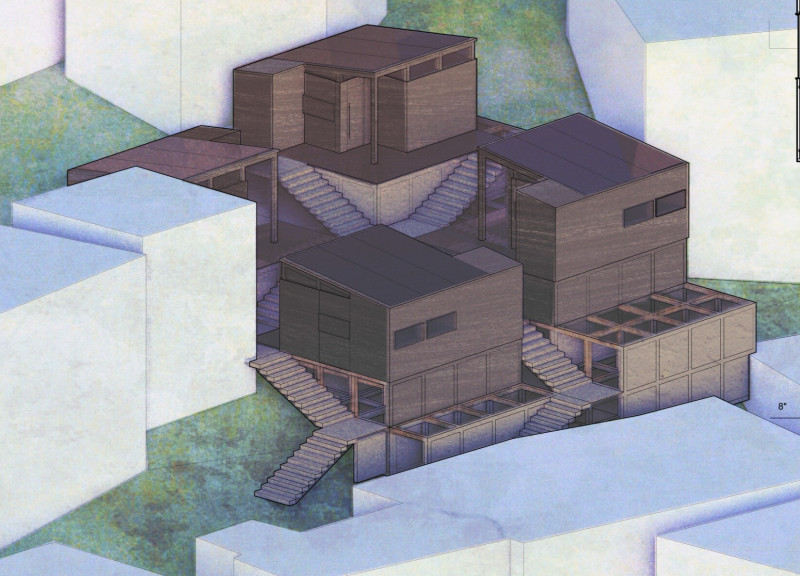5 key facts about this project
From the outset, the project reveals a commitment to sustainability through its selected materials and design strategies. The primary materials utilized include [list all materials such as concrete, wood, glass, metal], chosen not only for their structural properties but also for their environmental benefits. These materials reflect a sophisticated understanding of durability and climate resilience, ensuring that the building will endure over time while minimizing its ecological footprint. The use of [specific material], for example, contributes to thermal performance and energy efficiency, aligning with modern expectations for sustainable architecture.
Architectural design here emphasizes clarity and simplicity, allowing for an organic flow that facilitates movement and interaction within the space. The design features an open plan layout, fostering a sense of connectivity among different areas, which is essential for [specific function]. Large windows are strategically incorporated to maximize natural light and ventilation, promoting a healthy indoor environment while acknowledging the surrounding landscape through panoramic views. This connection to the exterior is a central tenet of the design, as it encourages occupants to engage with the natural world, providing a tranquil contrast to urban life.
Unique design approaches can be observed in the project's massing and form, which respond sensitively to the local context. The building’s silhouette is modulated to harmonize with the adjacent structures and topography, making it a cohesive part of the streetscape. The façade showcases a curated interplay of textures and colors, reflecting both the surrounding environment and the desired ambiance of the interior spaces. This careful attention to detail ensures that the architecture not only serves a functional role but also engages the viewer on an experiential level.
Landscaping plays a vital role in enhancing the architectural design, employing native vegetation to further blend the building with its context. The integration of green spaces, such as rooftop gardens or exterior terraces, not only contributes to biodiversity but also provides vital outdoor areas for community interaction and relaxation. This ecological approach underscores the project's aim to promote well-being among its users while contributing positively to the environment.
In terms of structural innovation, the project employs [specific techniques or technologies used in construction, such as cross-laminated timber (CLT) or modular construction methods], showcasing an understanding of modern construction practices that prioritize efficiency and sustainability. These methods facilitate reduced construction waste and a quicker build timeline, reinforcing the project's overall commitment to responsible architectural practices.
The architectural plans, sections, and elevations reveal the intricate details that inform the overall design vision. Each component, from the scale of individual rooms to the broader site layout, is crafted to ensure comfort and functionality. Furthermore, the architectural ideas embedded within the project reflect a broader dialogue concerning community, sustainability, and the role of modern architecture in urban environments.
Ultimately, this project stands as a strong example of contemporary architecture that prioritizes thoughtful design, community integration, and environmental responsibility. It invites further exploration and appreciation of its architectural plans, sections, and innovative ideas. Readers interested in diving deeper into the nuances of this project are encouraged to review the detailed presentation, gaining insights into how design can shape experience and enhance quality of life within urban settings.


























